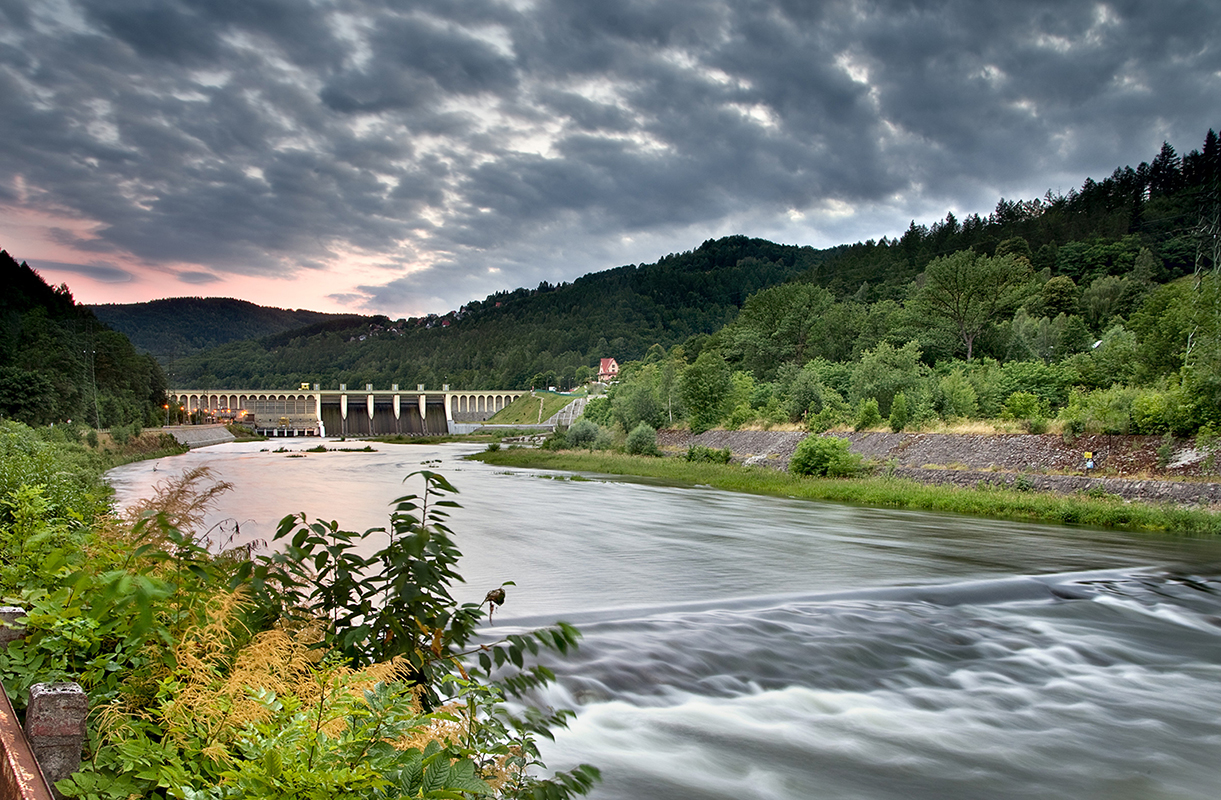BESKID MAŁY
REGION OF OUR CENTER
BESKID MAŁY has numerous hiking trails that can be crossed in a short time. Beautiful landscapes extend from the peaks of the Little Beskids, such as Góra Żary, Kiczera, Kocierza, Jaworzyna, Czupel, Magurka Wilkowicka or Potrójna. There is no need to persuade anyone to go on excursions to the Beskids, because the picturesqueness and accessibility of these mountains for tourists with varying degrees of physical fitness are known to everyone. The Beskids are a unique region of the Silesian Voivodeship also because you can find something for yourself at any time of the year. There is no shortage of wild areas hidden by nature in dense forests, as well as unique valleys and many picturesque passes. One of the most interesting geological forms are the caves that occur here, such as the Ice Cave, Komoniecki Grotto, Czarne Dzialy, Skała Czarownic or Smocza Jama, which – according to historical sources – was probably a kind of shelter for robbers, and those in the Beskids have never been missing 😉

WATER DAM IN PORĄBKA
The Water Dam in Porąbka and the water reservoir, today called Międzybrodzkie Lake, were built in the years 1928 - 1937 in a narrow isthmus between Zasolnica and Kozubnik. It was the first investment of this type in Poland. The dam was designed by Eng. Gabriel Narutowicz (later President of the Republic of Poland). A concrete dam, 37.3 m high, together with the dams in Tresna and Czaniec, form a cascade of the Soła River.

LAKE ŻYWIECIE
Situated just above and adjoining the Miendzybrodzkie Lake, it was established in 1966 as an artificial retention reservoir on the Soła river. The lake, enormous in its size, is situated on the border of the Żywiec Valley and the Little Beskids. The biggest attraction of the lake is the possibility of practicing all kinds of water sports. Numerous sailing and swimming schools as well as water equipment and bicycle rentals have been established here.

MIĘDZYBRODZKIE LAKE
Next to and above the Czaniecki reservoir, it is part of the Soła cascade. It was established in the years 1928 - 1937. This reservoir is an attractive water sports center with an extensive tourist infrastructure, including recreational centers, marinas and recreation areas. The lake is very picturesque thanks to its mountain surroundings.

LAKE CZANIECKIE
The artificial Czaniecki reservoir was built in 1966 in order to create the possibility of water abstraction for the Upper Silesian Industrial District and Bielsko Biała and to regulate the water level. It is picturesquely situated in the valley of the Soła River. It is covered by a water quality protection zone.

GÓRA ŻAR
Is a characteristic element of the area. The summit was artificially flattened in order to build a water reservoir for the underground Porąbka - Żar Hydroelectric Power Plant. You can get to the top by funicular railway. It is a tourist attraction: it is a paradise for hang gliders and skiers. It has attractions such as a toboggan run or downhill bike and ski routes. Its summit offers a beautiful view of the Oświęcim and Żywiecka Basin.

THE QUARRY IN KOZY
A recreational area with unique flora and fauna as well as geological structure. In the central part of the former quarry, as a result of flooding the old excavation with rainwater, an open flood reservoir was created - a charming pond. It is an area of a landscape park, but also an active rock landslide. It is used by residents and tourists for walking and recreational purposes. The horizontal rock ledges left over from the former excavations offer beautiful views of the surrounding area.

ŻYWIEC ETHNOGRAPHIC PARK ETHNOPARK in Ślemień
It is the youngest open-air museum in Poland and the third in the Silesian Voivodeship. It reflects the urban layout and buildings of the Beskid Żywiecki villages. In the area of over 6 hectares, 19 buildings of historic architecture have already been erected. Further expansion of the open-air museum is planned.

JAPANESE GARDEN PISARZOWICE
The basic principle of creating Japanese gardens is to imitate nature, not to tame it. The garden in Pisarzowice, which was established at the Ornamental Shrubs Nursery by Mr. Antoni Pudełka, measures about 18 ares, but is still growing. Water must also appear in a Japanese garden as an element of life and movement. The deep pond with beautiful aquatic plants and colorful fish as well as streams, cascades and charming bridges draws attention. A walk in the garden provides a moment of peace and extraordinary aesthetic impressions. An additional attraction of this place is a charming tea room, where you can taste several dozen types of tea. All this means that you should reserve a few hours for a visit here.

Babia Góra "Queen of the Beskids" (1725 m above sea level)
An expedition to the highest peak beyond the Tatra Mountains in Poland, in Beskid Żywiecki, is almost a must-see for all mountain lovers. In winter, in good weather and for properly prepared tourists, it is not technically difficult, contrary to appearances. Babia Góra, due to its height, offers a truly high-mountain climbing rewarded with wonderful views. As it is also one of the most popular peaks in Poland, it is good to plan your exit on a weekday. Pilsko - is the second highest peak in Beskid Żywiecki after Babia Góra. Often, the name Pilsko covers not only its main culmination (1557 m), entirely lying on the Slovak side, but also the entire massif. According to the Slovak regionalization, these are the Orava Beskids.
Our space
THAT MAY INTEREST YOU
Our address
Dom Przebudzeń
43-353 Porąbka
ul. Brzeziny 16A
PolandReservation
In English: +48 796 590 140
In Polish: +48 600 935 500
rezerwacja@domprzebudzen.plNewsletter
Social media





